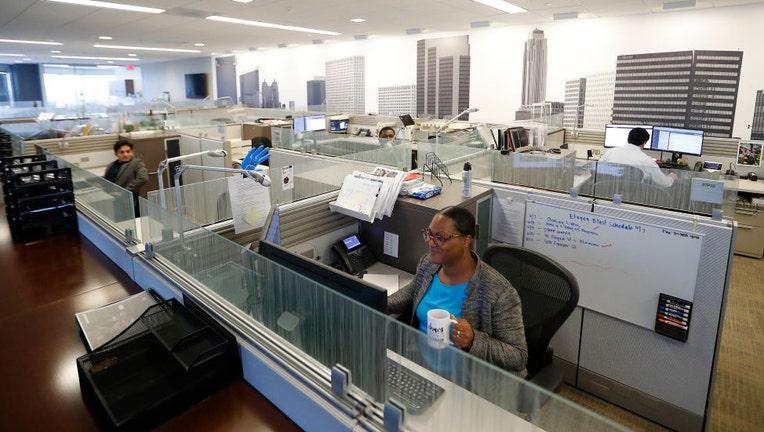Accelerated adoption of AI could automate 30% of Americans’ work hours: report

Employees sit at their workstations at a commercial real estate firm in Houston. (Karen Warren/Houston Chronicle via Getty Images)
Advances in artificial intelligence (AI) technology may reshape the U.S. workforce by the end of the decade as companies increasingly adopt AI tools to help automate tasks that consume nearly one-third of Americans’ workweeks, according to a new report.
The McKinsey Global Institute on Wednesday released a report on "Generative AI and the future of work in America" that found that advances in AI have the potential to accelerate automation in the economy.
"Without generative AI, our research estimated, automation could take over tasks accounting for 21.5 percent of the hours worked in the U.S. economy by 2030," the report said. "With it, that share has now jumped to 29.5 percent."
TWO-THIRDS OF US JOBS COULD BE EXPOSED TO AI-DRIVEN AUTOMATION: GOLDMAN SACHS
Several occupations were identified by the McKinsey report as being positioned to see a greater share of automated work hours with the aid of AI.
Professionals in science, technology, engineering and mathematics (STEM) fields would see the percentage of their automated work hours jump by 16 points to 30% by 2030 because of accelerated AI adoption.
Education and workforce training professionals would also see a 16% increase, although those fields had a lower automation baseline without AI acceleration. So, AI-guided automation would only account for about 23% of those professionals’ hours worked in 2030.
WHAT IS ARTIFICIAL INTELLIGENCE (AI)?
Other job categories with notable increases include creatives and arts management, which would see a 15-point jump to about 25% of hours worked, in addition to business and legal professionals, who would see a 14-point increase to 30% of hours worked.
Areas in which generative AI is projected to have a smaller impact on automating workers’ tasks over the rest of the decade include agricultural work, which would see only a 3% automation increase, while production workers and health and wellness technicians would see a 4% increase, according to the report.
AI TECHNOLOGY UNLIKELY TO FULLY REPLACE FINANCIAL ADVISERS: MORNINGSTAR
Agriculture and production work roles have high automation baselines of 27% and 30%, respectively, as starting points – although health technicians are at roughly 15%, according to the report.
Across all sectors of the economy, American workers are projected to see an additional 8% of their work hours automated by 2030 with the acceleration of generative AI, bringing the total of automated work hours to about 30%.
As for whether the widespread adoption of AI will lead to the elimination of a significant number of jobs, the McKinsey report noted, "Our research does not lead us to estimate job losses, although we cannot definitively rule out that conclusion, at least in the short term. Technological advances often cause disruption — but historically, they have eventually fueled economic and employment growth."
Customer service and sales, in addition to office support roles were the occupations the report found were most likely to see decreasing labor demand and a modest change of work activities due to AI. To a lesser degree, food services and production work were also identified as fields where labor demand would likely decline due to automation accelerated by AI.
Even as demand for labor in certain fields declines, the report found that those declines could manifest themselves in terms of slower overall growth in those fields rather than net declines between now and 2030.
"While we do not predict aggregate employment levels ourselves, we do model various drivers of labor demand to look at how the mix of jobs might change – and those results yield some gains and some losses," the report noted.
"In fact, the occupational categories most exposed to generative AI could continue to add jobs through 2030, although its adoption may slow their rate of growth."

